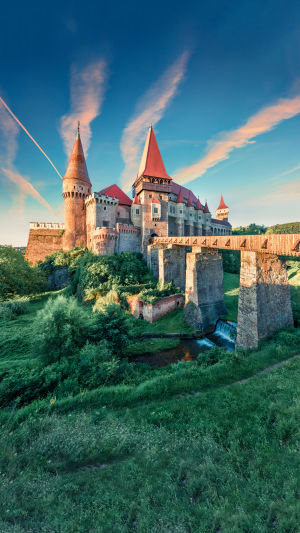Europe, with its rich history and architectural wonders, offers a plethora of must-see attractions for travelers.
Amidst the picturesque landscapes and charming villages, one castle stands out as a true crown jewel - Neuschwanstein Castle.
Nestled in the Bavarian Alps of Germany, this fairy-tale fortress captivates the hearts of visitors with its enchanting beauty and intriguing history.
Neuschwanstein Castle, often referred to as the "Castle of the Fairy Tale King," was commissioned by King Ludwig II of Bavaria in the 19th century. The castle's construction began in 1869 and was never fully completed, but this incomplete state adds to its mystique. Perched on a rugged hill overlooking the village of Hohenschwangau, Neuschwanstein is a quintessential example of romantic architecture, drawing inspiration from medieval legends and Wagnerian operas.
One cannot help but be mesmerized by the castle's exterior. The towering turrets and spires, adorned with intricate carvings and delicate balconies, create a silhouette against the backdrop of the Alps that seems straight out of a storybook. The façade is adorned with vibrant murals depicting scenes from Wagner's operas and German legends, adding a layer of cultural richness to the castle's visual appeal.
As visitors approach the castle, they are greeted by a sweeping panorama of the surrounding landscape. The Marienbrücke, or Mary's Bridge, offers a breathtaking view of Neuschwanstein against the backdrop of alpine lakes and lush forests. The bridge, suspended over a gorge, provides an ideal vantage point for capturing the essence of this architectural marvel.
Beyond its aesthetic allure, Neuschwanstein Castle holds a fascinating history. King Ludwig II, often regarded as the "Mad King" or the "Fairy Tale King," envisioned Neuschwanstein as a retreat inspired by the operas of Richard Wagner. The castle's interior, though incomplete, reflects Ludwig's extravagant taste and romantic imagination. Intricately designed rooms such as the Throne Room, Singers' Hall, and the King's chambers transport visitors to a bygone era of opulence and artistic expression.
A notable feature of Neuschwanstein Castle is its forward-thinking architectural elements. Despite its medieval-inspired appearance, the castle incorporated modern amenities of the time, such as central heating, running water, and even an electric bell system. This blend of old-world charm and technological innovation adds an extra layer of fascination for history enthusiasts and architecture aficionados alike.
Visitors to Neuschwanstein can explore the castle's interior through guided tours. As you wander through the halls adorned with ornate decorations and murals, a sense of timelessness pervades the air. Each room tells a story, and the unfinished chambers offer a glimpse into the grand vision that King Ludwig had for his fairy-tale retreat.
Beyond the castle itself, the surrounding region offers additional attractions. The nearby Hohenschwangau Castle, the childhood residence of King Ludwig II, provides insight into the monarch's early life and influences. The quaint village of Hohenschwangau offers charming cafes and shops, allowing visitors to immerse themselves in the local culture.
Neuschwanstein Castle stands as Europe's crown jewel, captivating all who set eyes on its fairy-tale silhouette. Its romantic architecture, dramatic setting, and rich history make it a must-see destination for travelers exploring the heart of Europe. As you step into the world of Neuschwanstein, you embark on a journey through time and fantasy, leaving you with memories that linger long after you bid farewell to this enchanting Bavarian masterpiece.





